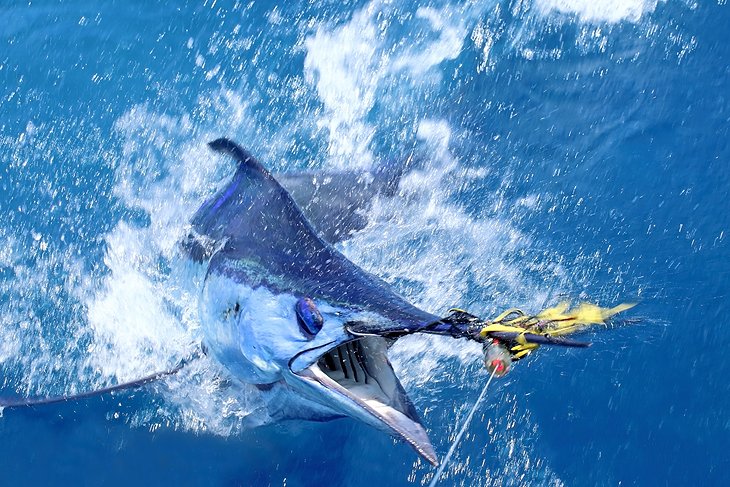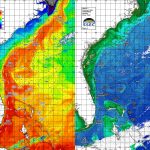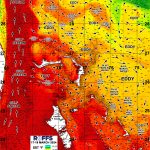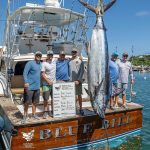Article Courtesy: saltwatersportsman.com | Article Updated: 7/14/2021 | Click here for original article
Where to Fish in August and September
The Salt Water Sportsman editors give you the top two locations to go in August and September for your favorite saltwater species, plus guidance regarding why the bite there is smoking hot and how you should plan your next trips.
First choice: Panama
Second choice: Costa Rica
On Panama’s Pacific coast, blues—mostly in the 250- to 350-pound class—continue to compete for food with black marlin, Much of the action takes place right along the color change 12 to 14 miles offshore, where flotsam gathers and attracts a variety of forage species, including the small tuna and bonito favored by marlin. In Costa Rica, blue marlin fishing around offshore seamounts remains productive
.
Atlantic Blue Marlin
First choice: U.S. Virgin Islands
Second choice: Bermuda
Hefty blues continue making their way along the north and south drops near St. Thomas and a smaller deepwater trench near St. Croix, where visiting anglers still stand a chance to tangle with the marlin of a lifetime, perhaps even a grander. Another great place to target giant blues is Bermuda, where in seasons past a number of outstanding catches have been recorded.
First choice: Australia
Second choice: Panama
Now is when the big girls start to patrol Australia’s Great Barrier Reef. It takes 20- to 40-pound tuna to bait blacks of 700 pounds or better, and the explosive strikes are not for the faint of heart. Panama’s Pacific coast also offers excellent black marlin action this time of year, but most fish fall in the 200- to 400-pound range, better-suited for 50- to 80-pound tackle, instead of the heavier 130s often used Down Under.
First choice: Virginia
Second choice: Maryland
The annual billfish summer migration continues in the mid-Atlantic, bringing pods of northbound white marlin to waters off the Virginia and Maryland coasts. The sport-fishing fleets out of Virginia Beach, Ocean City and neighboring ports cash in, and it’s common to see a number of boats return to the dock flying a dozen or more release flags when the bite heats up.
First choice: North Carolina
Second choice: Virginia
Like marlin, sailfish also follow the conga line marching up the Eastern Seaboard this time of year. Expect many of the fish to stage off North Carolina shores, prowling the first drop in the continental shelf in both the Crystal Coast and Outer Banks regions. Other sails, meanwhile, continue to push northward to Virginia waters, within reach of boats out of Virginia Beach.
First choice: Guatemala
Second choice: Mexico
Summer doldrums aren’t quite the same in Guatemala’s offshore-fishing scene. No, the action at this time doesn’t compare to peak season; however, it’s still possible for boats to release half a dozen sails or more a day. On Mexico’s west coast, big-game fleets out of popular vacation towns such as Acapulco, Zihuatanejo, Manzanillo and Puerto Vallarta offer reliable sailfishing.
First choice: Mexico
Second choice: Ecuador
Cabo San Lucas is synonymous with striped marlin fishing and, while the bite won’t peak there for another month, the action is already on the upswing, providing enough chances for anglers to tally multiple releases in a single day. In Ecuador, waters around the Galapagos yield plenty of striped marlin for boats willing to take on the choppy seas encountered this time of year.
First choice: North Carolina
Second choice: Bermuda
North Carolina becomes wahoo central the next couple of months as waters off Crystal Coast and the Outer Banks host an abundance of striped torpedoes of 25 to 40 pounds, with some surpassing the 50-pound mark. In Bermuda, which is famous for its wahoo fishery, the bite around the offshore Argus and Challenger banks again heats up, providing fast and consistent action.
First choice: Louisiana
Second choice: Panama
The Gulf of Mexico off southeast Louisiana provides an excellent opportunity to mix it up with yellowfins in the 40- to 80-pound class. Best results are bound to come around offshore oil and gas platforms anchored in deep water. Now is also when schools of hungry yellowfin tuna travel along Panama’s Pacific coast, hunting for food around underwater pinnacles and banks.
First choice: Massachusetts
Second choice: Prince Edward Island
Cape Cod Bay, Jeffreys Ledge, and Georges and Stellwagen banks prove reliable bluefin tuna hotspots for boats out of Gloucester and Rockport, Massachusetts. Up in Canadian waters, packs of giant bluefins funnel through the Northumberland Straight, en route to the Gulf of St. Lawrence, where they stage to fatten up before embarking on their seasonal trans-Atlantic crossing.
First choice: Bahamas
Second choice: Turks and Caicos
With the exception of midday hours, expect bones to be both abundant and eager feeders throughout the Bahamas shallows. Look for tailers and even belly crawlers in super-skinny water early and late in the day, especially during spring tides. In neighboring Turks and Caicos, expect to encounter the same conditions and similar fishing situations on the flats of Provo, North, Middle and East Caicos islands.
First choice: Florida
Second choice: Belize
Florida’s snook season opens on September 1, but catch-and-release is allowed and productive before then. Just remember that many small males will eventually become the large females of tomorrow, so play all snook quickly, and revive and release them properly to ensure their survival. In Belize, fishing for linesiders vastly improves in mangrove lagoons and coastal rivers.
First choice: Florida
Second choice: Georgia
With the big annual migration out of the way, resident tarpon in Florida focus on fattening up, targeting ladyfish, threadfin herring, mullet, and other large prey that tend to congregate in schools and offer big returns for their hunting efforts. Georgia’s tarpon fishing peaks now. Live-baiting in major bays and the mouths of coastal creeks and rivers leading to the marshes is a reliable tactic.
First choice: Florida
Second choice: Belize
From Miami’s Biscayne Bay down to the Gulf and oceanside flats of the lower Keys, permit fishing turns on this time of year, especially during stronger tides, when the fish move into the shallows to feed. In Belize, permit remain active and abundant around the atolls, as well as on the grass flats and across the shoals stretching along the coast between the reef and the beach.
First choice: Louisiana
Second choice: Florida
Cajun waters still hold on to the top spot in the redfishing destinations list, and now is when the big bulls hammer pogies schooling around outer islands, points, and the mouths of major passes and bayous. Getting in on the action is as easy as casting around baitfish concentrations. In the Sunshine State, large reds school in preparation for spawning, staging in 4 to 8 feet of water on the outskirts of grass flats.
First choice: Massachusetts
Second choice: New York
This is the last reliable time of the year to target trophy stripers in the Northeast before they begin to head toward their wintering grounds. Now is also when the fish put on the feed bag and home in on large schooling baitfish, making them easier to find and susceptible to liveys and artificials. Traditional hotspots in Massachusetts and New York’s coastal waters are good places to start.
First choice: Florida
Second choice: Mexico
In South Florida from midsummer to late summer, fishing the night shift proves more productive and offers a respite from the harsh sun. Squid rigged with strobes or glow sticks should tempt enough broadbills to keep anglers busy. On Mexico’s west coast, big-game boats still find swordfish finning on the surface. Trolling liveys and pitching one ahead of fish riding the waves are the preferred tactics.
First choice: Texas
Second choice: Louisiana
The northern Gulf of Mexico, particularly off the coasts of Texas and Louisiana, offers the best kingfishing at this time. Search for fish feeding around the mouths of major passes as well as around shrimp boats—either trawling or anchored—and oil and gas platforms in less than 250 feet of water. Trolling liveys, diving plugs or spoons should all pay off.
Ravenous blues continue their guerrilla warfare on baitfish schooling in Massachusetts and New York coastal waters. Short-lived frenzies popping up, first here and then there, turn the fishing into a game of hide-and-seek. Martha’s Vineyard, Cape Cod, Montauk and Long Island beaches should produce consistent catches until water temperatures begin to dip with the first cold front in the fall.
Second choice: North Carolina
In Panama, packs of dorado will be traveling outside Humboldt and Parita bays as well as the Gulf of Panama, making this the right moment to hook that 50-pounder. In North Carolina, dolphin find forage and shelter under debris floating in the Gulf Stream. Keep in mind that big bulls and cows often lurk 20 to 50 feet below flotsam, so keep a rod rigged with a bucktail jig or weighted swimbait.






